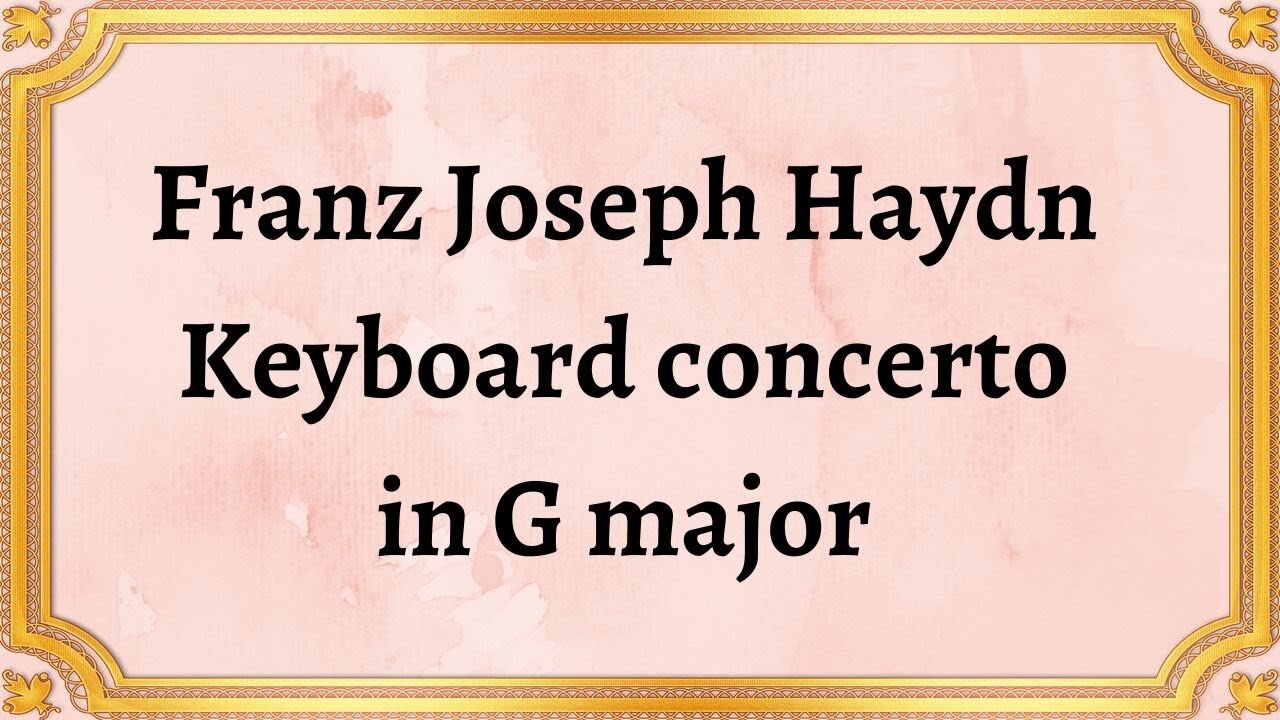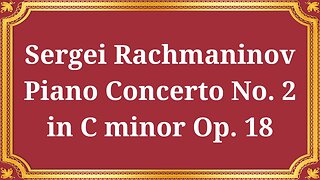Premium Only Content

Franz Joseph Haydn Keyboard concerto in G major
#classicalmusic #musicalcomposition #orchestralmusic #pianist #Haydn #KeyboardConcerto #Gmajor #MusicAppreciation #musiceducation
Franz Joseph Haydn's Keyboard Concerto in G major is a beautiful piece of music in the classical genre. The concerto is one of the earliest examples of the keyboard concerto format, a musical composition that has a soloist accompanied by an orchestra.
Haydn composed the Keyboard Concerto in G major in the early 1780s. At the time, he was employed in the court of Prince Nikolaus Esterhazy, where he had access to excellent musicians and an extensive music library. It is believed that Haydn composed the piece for the pianist Barbara von Ployer, a student of Mozart and one of Haydn's pupils.
The Keyboard Concerto in G major follows a robust three-movement structure that is typical of the classical concerto. The first movement, Allegro, begins with orchestral music that sets the tone for the soloist's entry with virtuosic piano passages that demonstrate the soloist's technical abilities. The second movement, Adagio, is a serene and lyrical piece with the soloist taking center stage and allowing the full beauty of the instrument to come through. The final movement, Allegro, is a joyous, lively, and energetic piece that brings the concerto to a close.
The concerto showcases Haydn's remarkable arranging skills and the balance between the solo instrument and the orchestra. In the first movement, the piano and the orchestra engage in a delightful conversation, with both interchanging roles in a playful and engaging approach. The second movement, on the other hand, demonstrates Haydn's skillful use of melody and harmony, and the soloist's impressive restraint in highlighting the beauty of the piano.
One of the most notable elements of the Keyboard Concerto in G major is the Cadenzas in each movement. A Cadenza is a solo section in which the orchestra stops playing, and the soloist performs an extended passage alone. These sections demonstrate the soloist's variations and improvisation skills and are a staple in many classical concertos.
In summary, the Keyboard Concerto in G major is a beautiful piece of music, representing one of the earliest examples of the keyboard concerto format. Through its notable elements, such as the three-movement structure, balance between the solo instrument and the orchestra, and the use of cadenzas, the concerto continues to captivate audiences today.
You have the opportunity to support the channel https://destream.net/live/RadSiarAl/donate
-
 34:38
34:38
Classical music_Music Inspiration
1 month agoSergei Rachmaninov Piano Concerto No. 2 in C minor Op. 18
82 -
 11:39
11:39
Tundra Tactical
10 hours ago $10.74 earnedSurprise Releases For the Trailer Park & The Micro-Brewery.
58.7K10 -
 19:51
19:51
Bearing
21 hours agoMy VAMPIRE WIFE is in a SATANIC MURDER CULT (Allegedly)🧛♂️🔪🩸
82.5K42 -
 13:08
13:08
Exploring With Nug
18 hours ago $15.90 earnedWe Explored a Lake with an Underwater Drone — Here's What We Found!
80.6K5 -
 15:07
15:07
Mrgunsngear
1 day ago $15.11 earnedStreamlight TLR-1 HL-X USB Weapon Light Review 🔦
92.1K8 -
 3:31:40
3:31:40
Barry Cunningham
12 hours agoREACTING TO THE DOGE INTERVIEW | MORE NEWS | NEW AFTER PARTY! (Re-Stream)
90.3K191 -
 14:42
14:42
FATTACnation
15 hours agoBudget Optic Worth your Money???
20.9K8 -
 8:00:01
8:00:01
SpartakusLIVE
11 hours agoVerdansk DUOS w/ GloryJean || Saturday SPARTOONS
20.6K1 -
 6:33:45
6:33:45
SLS - Street League Skateboarding
10 days ago2025 SLS Miami: Women's and Men's Knockout Rounds and Finals
552K140 -
![Nintendo Switch It UP Saturdays with The Fellas: LIVE - Episode #17 [Mario Kart 8 Deluxe]](https://1a-1791.com/video/fww1/1f/s8/1/z/l/n/H/zlnHy.0kob-small-Nintendo-Switch-It-UP-Satur.jpg) 3:58:23
3:58:23
MoFio23!
17 hours agoNintendo Switch It UP Saturdays with The Fellas: LIVE - Episode #17 [Mario Kart 8 Deluxe]
13.3K1